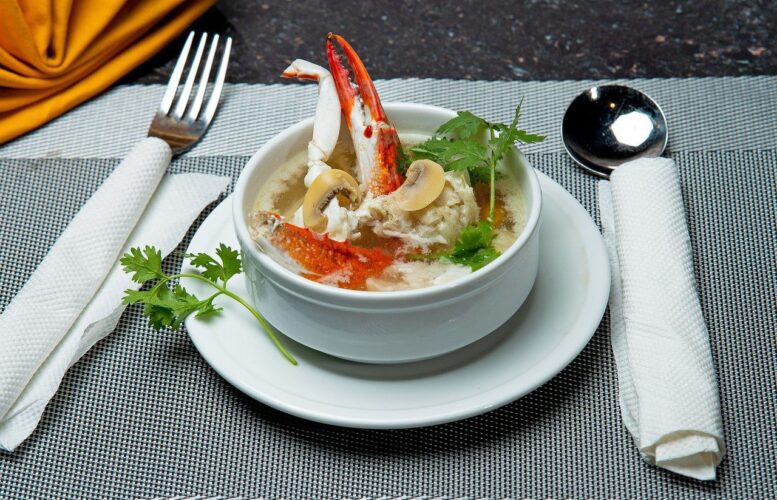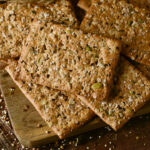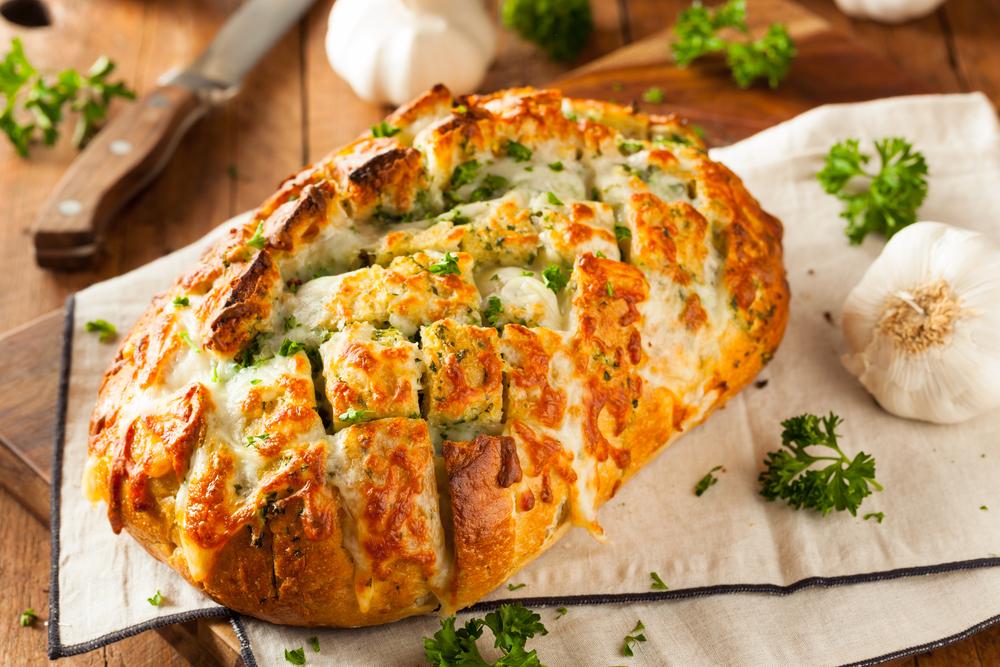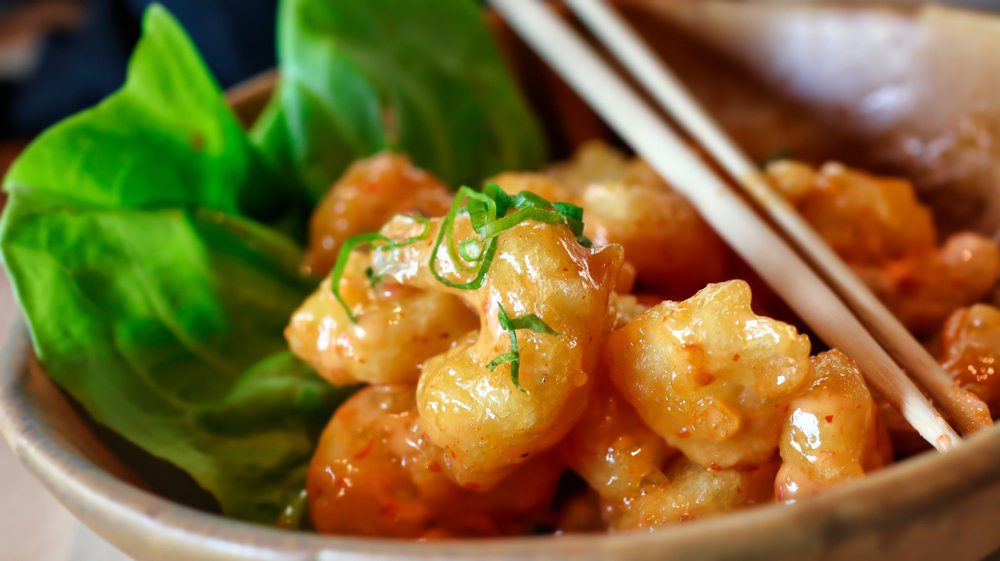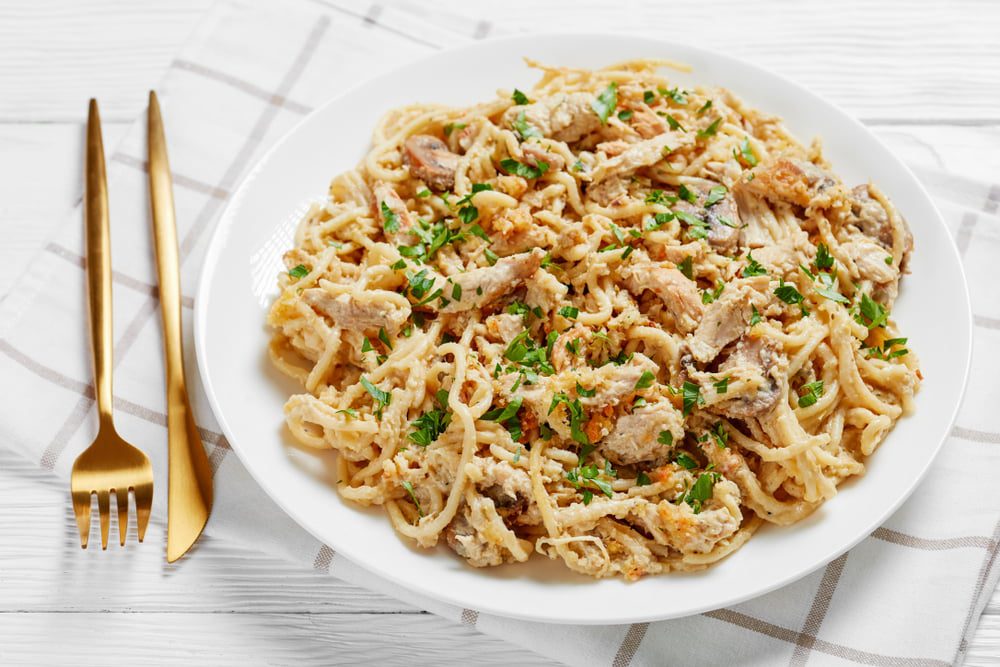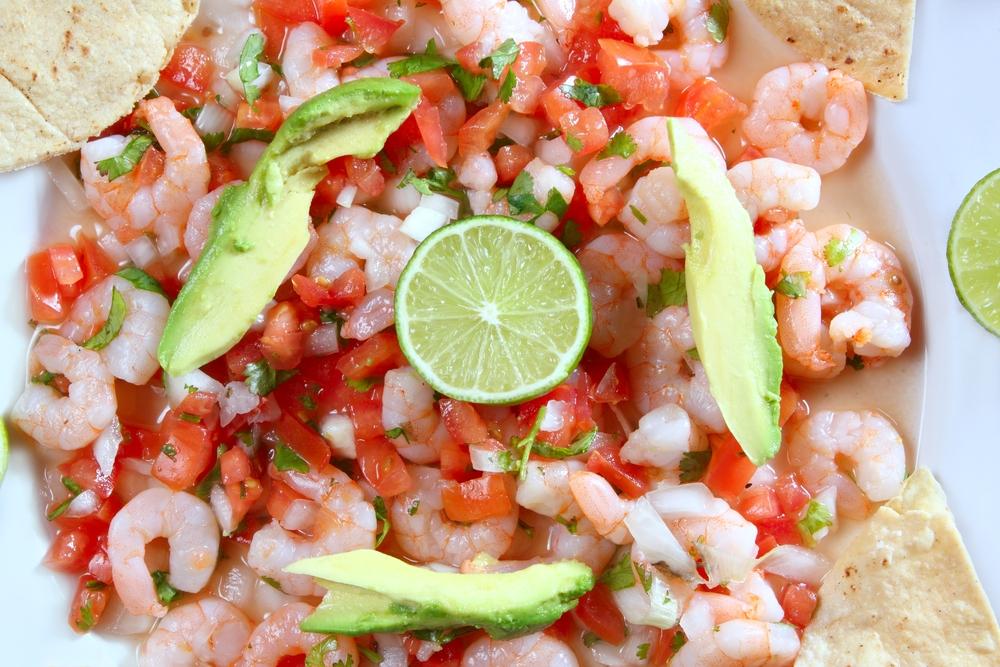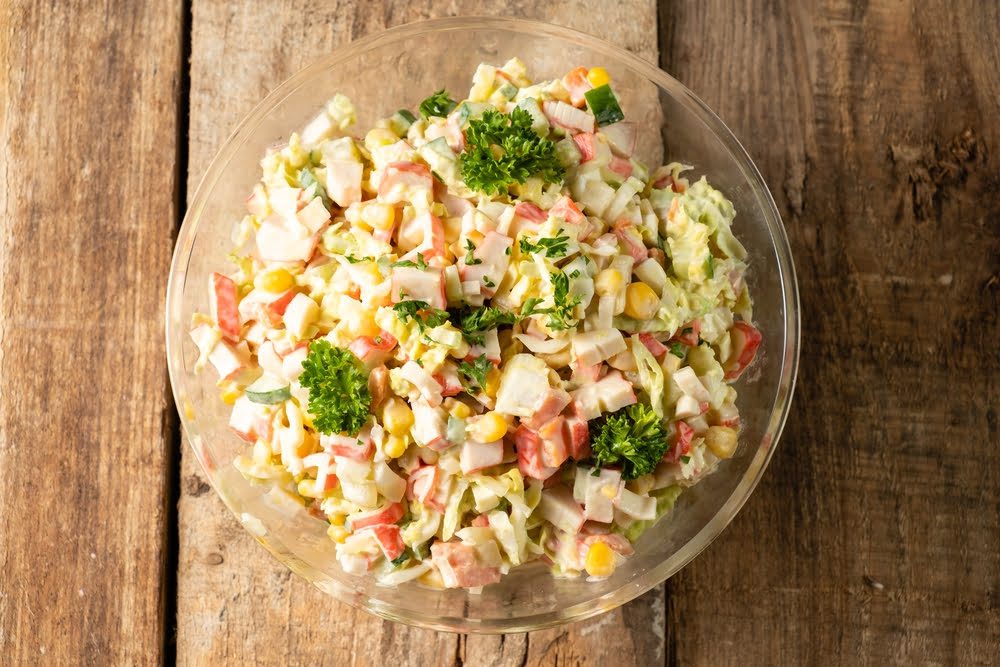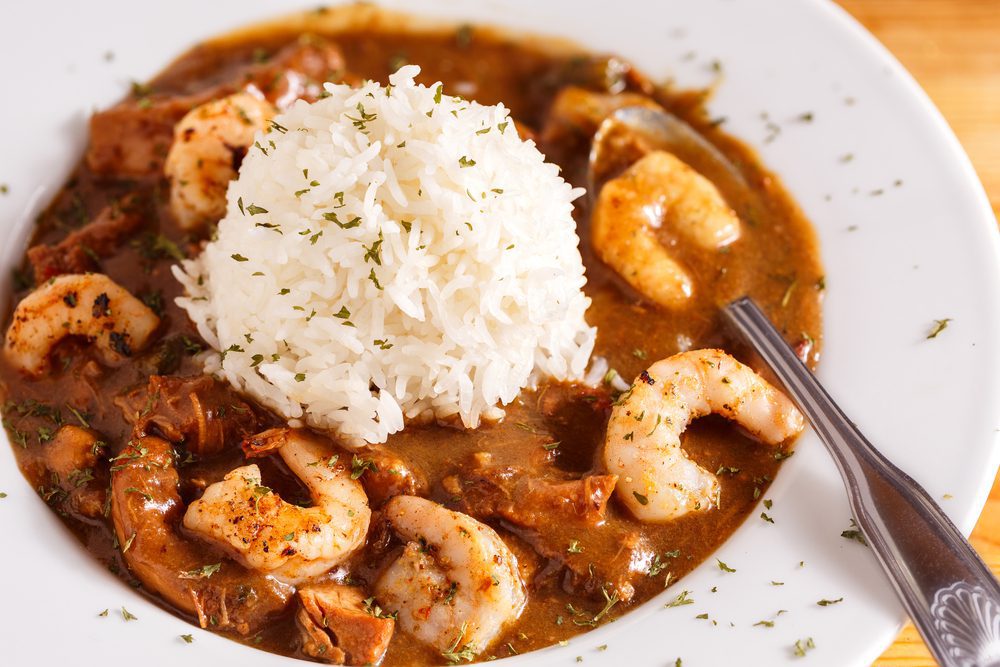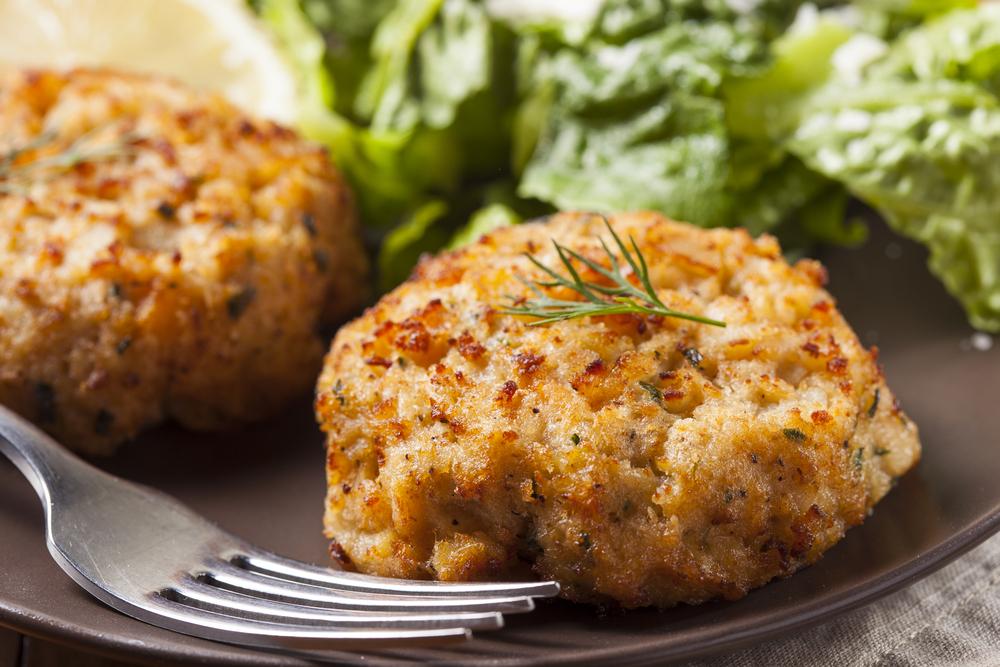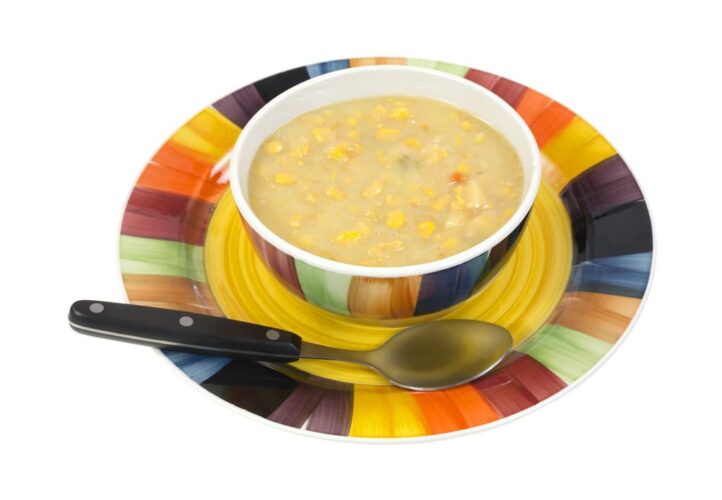Crab is a delicious seafood that is enjoyed by people all around the world. Not only is it tasty, but it also offers a range of health benefits that make it an excellent addition to any healthy diet. In this article, we’ll explore 9 of the most significant health benefits of crab, as well as some tips for incorporating it into your meals.
What is Crab?
Crab is a type of crustacean that is found in oceans, rivers, lakes and other bodies of water around the world. It has a hard outer shell and ten legs, including two large claws. There are many different species of crab, each with its own unique characteristics and habitat. Crabs are an important part of the food chain, serving as a food source for many animals including humans.
They are often eaten steamed, boiled or fried and can be found in a variety of dishes such as crab cakes, crab legs and crab soup. Crab is also a popular ingredient in sushi and other Japanese cuisine. Overall, crab is a delicious and versatile seafood that is enjoyed by many people around the world.
Nutritional Value of Crab.
Crab is not only a delicious seafood delicacy but also offers a range of nutritional benefits. It is a low-calorie and low-fat source of protein, making it an excellent choice for those watching their weight or looking to build muscle.
Crab is also rich in essential vitamins and minerals, including selenium, vitamin B12 and omega-3 fatty acids, which are known to support brain health and reduce inflammation.
Additionally, it contains a good amount of phosphorus, copper and zinc, which are important for maintaining bone health and boosting the immune system. Overall, incorporating crab into your diet can provide a nutrient-rich and flavorful addition to your meals.
Top 9 Health Benefits of Crab.
1. Crab is a Rich Source of Protein.
One of the most significant health benefits of crab is its high protein content. Protein is an essential nutrient that is necessary for the growth and repair of tissues in the body. Just one serving of crab can provide you with a significant amount of your daily protein needs. This makes crab an excellent choice for athletes and people who are looking to build muscle mass.(1)
2. Crab Contains Essential Vitamins and Minerals.
In addition to being a rich source of protein, crab also contains a variety of essential vitamins and minerals. For example, it is an excellent source of vitamin B12, which is essential for healthy nerve function.
Crab also contains minerals such as zinc, selenium and copper, which are important for maintaining a healthy immune system and promoting healthy skin and hair. With its wide range of vitamins and minerals, crab is an excellent addition to any healthy diet.(2)
3. Crab Can Improve Heart Health.
Research has shown that crab may have several heart-healthy benefits. For example, it is low in saturated fat and high in omega-3 fatty acids, which can help to reduce inflammation in the body and lower the risk of heart disease.
Additionally, crab contains compounds such as taurine and glycine, which may help to reduce cholesterol levels in the blood. If you’re looking to improve your heart health, adding crab to your diet is an excellent place to start.(3)
4. Crab Meat Can Boost Brain Function.
Crab is also a rich source of choline, which is a nutrient that is essential for brain function. Choline helps to maintain the structure of cell membranes and it is also necessary for the production of acetylcholine, a neurotransmitter that is important for memory and learning. If you want to keep your brain healthy and functioning at its best, incorporating crab into your diet is a smart move.
5. Crab Can Aid in Weight Loss.
Despite its rich flavor and texture, crab is relatively low in calories and fat. This makes it an excellent food choice for people who are looking to lose weight.
Additionally, crab contains a significant amount of protein, which can help you to feel full and satisfied for longer periods, reducing the likelihood of overeating. If you’re trying to shed some extra pounds, adding crab to your diet can be a helpful strategy.
6. Crab Can Help To Regulate Blood Sugar Levels.
Crab is also a good source of chromium, a mineral that is essential for regulating blood sugar levels in the body. Chromium helps to improve insulin sensitivity, which can be beneficial for people with diabetes or those who are at risk of developing the condition. By incorporating crab into your diet, you may be able to help regulate your blood sugar levels naturally.
7. Crab May Have Anti-inflammatory Properties.
Crab contains several compounds that may have anti-inflammatory properties. For example, it contains chitin, a compound that has been shown to have anti-inflammatory effects in the body.
Additionally, crab is a good source of omega-3 fatty acids, which are known for their anti-inflammatory properties. By consuming crab regularly, you may be able to reduce inflammation in the body and reduce your risk of chronic diseases such as arthritis and heart disease.
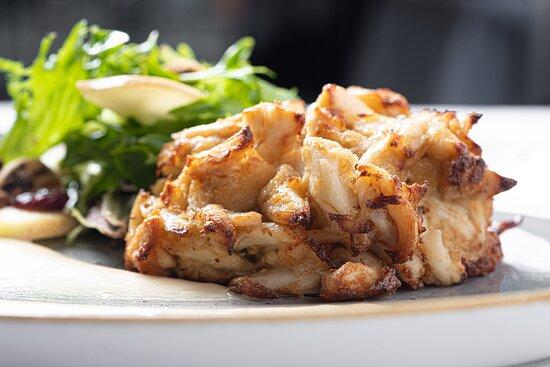
8. Crab Can Improve Bone Health.
Crab is a good source of several essential minerals, including calcium, phosphorus and magnesium. These minerals are essential for maintaining healthy bones and teeth and consuming crab regularly can help to prevent conditions such as osteoporosis. If you’re looking to improve your bone health, adding crab to your diet is an excellent place to start.
9. Crab Can Enhance Immune Function.
Finally, crab is an excellent food choice for boosting immune function. It is a rich source of several essential vitamins and minerals, including vitamin C, zinc and selenium, all of which are important for maintaining a healthy immune system.
However, crab also contains compounds such as beta-carotene, which is known for its immune-boosting properties. By incorporating crab into your diet, you may be able to improve your immune function and reduce your risk of infections and illnesses.
Side Effects of Crab.
Crab is a delicious seafood that is enjoyed by many people around the world. However, like any other food, crab also has certain side effects that need to be considered. Here are some of the most common side effects of crab:
1. Allergic Reactions.
Some people may be allergic to crab and they may experience symptoms such as hives, itching, swelling and difficulty in breathing. It is important to seek medical attention immediately if you experience any of such symptoms.
2. Gastrointestinal Problems.
Eating crab can cause digestive problems such as nausea, vomiting, diarrhea and abdominal pain. This is because crab is high in protein and can be difficult to digest for some people.
3. High Cholesterol.
Crab is high in cholesterol, which can be a problem for people with high cholesterol levels or those at risk of heart disease.
4. Mercury Poisoning.
Crab can contain high levels of mercury, which can be toxic to the human body. Symptoms of mercury poisoning include tremors, memory problems and difficulty in concentrating.
5. Shellfish Poisoning.
Eating spoiled or contaminated crab may cause shellfish poisoning, which can lead to symptoms such as vomiting, diarrhea and abdominal pain.
6. Environmental Concerns.
Crab is often caught using unsustainable fishing methods, which can harm the environment and lead to overfishing. It is important to choose crab that is sustainably sourced to minimize the environmental impact.
Overall, while crab is a tasty and nutritious food, it is important to be aware of these potential side effects and consume it in moderation. Consult with a healthcare professional or a nutritionist to learn more about how to enjoy crab safely and healthily.
How to Cook Crab?
Cooking crab is a delicious and impressive way to prepare seafood. Here are some simple steps to follow to cook crab:
1. Choose your crab: There are many types of crab available, including Dungeness, king, blue and snow crab. Choose the type of crab you would like to cook based on your personal preference and availability.
2. Clean the crab: Before cooking, rinse the crab under cold water to remove any debris or sand that may be on the shell. Use a brush to gently scrub the shell clean.
3. Boil the crab: Fill a large pot with enough water to cover the crab and add salt and other seasonings of your choice. Bring the water to a boil and carefully add the crab to the pot. Cook for approximately 10-20 minutes, depending on the size of the crab.
4. Remove the crab from the pot: Use tongs or a slotted spoon to remove the crab from the boiling water and place it on a large plate or platter.
5. Serve and enjoy: Once the crab has cooled slightly, crack open the shell and remove the meat. Serve with melted butter, lemon wedges and your favorite sides.
Cooking crab can be a bit intimidating, but with these simple steps, you’ll be able to impress your guests with a delicious seafood feast.
Different Recipes of Crab.
Crab is a delicious and versatile seafood that can be prepared in a variety of ways. From classic crab cakes to spicy crab curry, there are endless options for cooking this delectable crustacean. Here are some different recipes of crab that you can try:
1. Crab Cakes: A classic recipe that combines lump crab meat, breadcrumbs, mayonnaise and spices to create patties that are fried until golden brown. Serve with tartar sauce or lemon wedges.
2. Crab Rangoon: A popular Chinese American appetizer made with wonton wrappers filled with a mixture of cream cheese, crab meat and scallions. These crispy and creamy bites are perfect for parties.
3. Crab Bisque: A creamy soup made with lump crab meat, heavy cream and vegetable broth. Seasoned with garlic, thyme and cayenne pepper, this rich and comforting dish is perfect for chilly nights.
4. Spicy Crab Curry: A flavorful Indian dish made with fresh crab meat, coconut milk and a blend of spices such as turmeric, cumin, coriander and red chili powder. Served with rice or naan bread, this dish is sure to warm you up.
5. Crab Salad: A light and refreshing salad made with lump crab meat, celery, red onion and a tangy dressing of mayonnaise, lemon juice and Dijon mustard. This salad is perfect for a summer lunch or picnic.
6. Crab Stuffed Mushrooms: A delicious appetizer made with large mushroom caps stuffed with a mixture of crab meat, cream cheese, parmesan cheese and breadcrumbs. Baked until golden brown, these savory bites are sure to impress your guests.
7. Crab Linguine: A simple yet elegant pasta dish made with fresh crab meat, linguine pasta, garlic, white wine and lemon juice. Tossed with parsley and red pepper flakes, this dish is perfect for a romantic dinner.
Crab is a versatile ingredient that can be used to create a wide range of delicious dishes. Whether you prefer it in a classic recipe or a spicy curry, there is a crab dish out there that is sure to satisfy your taste buds.
Bottom Line.
As you can see, crab is an excellent food choice for anyone looking to improve their overall health and well-being. Whether you’re looking to build muscle, improve your heart health or boost your immune function, crab has something to offer. To incorporate crab into your diet, try adding it to salads, soups or pasta dishes. You can also enjoy it on its own, steamed or grilled, with a side of vegetables. So why not give this tasty and nutritious seafood a try today?
+3 Sources
Verywelfit has strict sourcing guidelines and relies on peer-reviewed studies, educational research institutes, and medical organizations. We avoid using tertiary references. You can learn more about how we ensure our content is accurate and up-to-date by reading our editorial policy.
- Nutritional properties of wild and fattening mud crab (Scylla serrata) in the south-eastern district of Bangladesh; https://www.ncbi.nlm.nih.gov/pmc/articles/PMC9198322/
- Nutritional aspects, flavour profile and health benefits of crab meat based novel food products and valorisation of processing waste to wealth: A review; https://www.researchgate.net/publication/350735848_Nutritional_aspects_flavour_profile_and_health_benefits_of_crab_meat_based_novel_food_products_and_valorisation_of_processing_waste_to_wealth_A_review
- Non-invasive quantification of cardiac stroke volume in the edible crab Cancer pagurus; https://www.ncbi.nlm.nih.gov/pmc/articles/PMC6909657/
How we reviewed this article:
Our team of experts is always monitoring the health and wellness field, ensuring that our articles are updated promptly as new information emerges. See Our Editorial Process
Dec 7, 2025
Written By: Jill Castle
Reviewed By: Roxana Ehsani
Written By: Jill Castle
Reviewed By: Roxana Ehsani

 Workout
Workout
 Meditation
Meditation





 Contact Us
Contact Us



